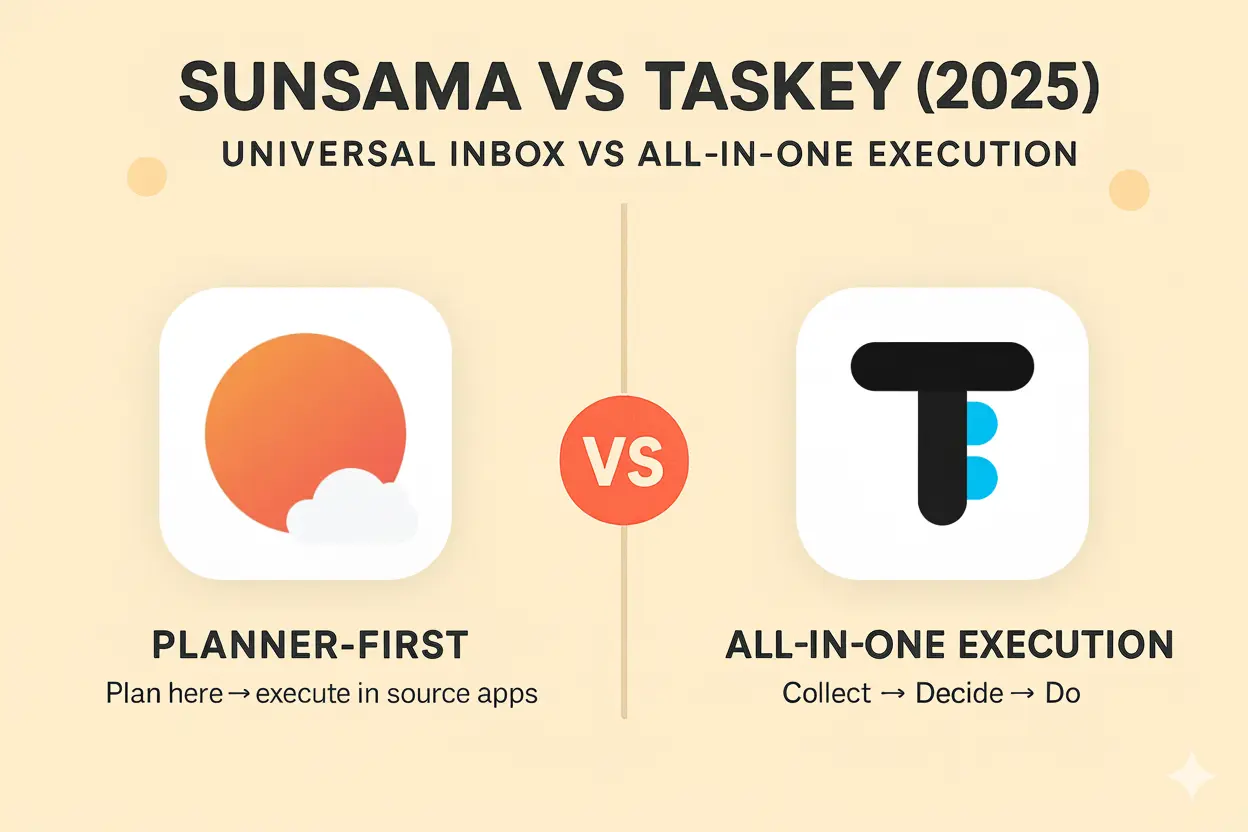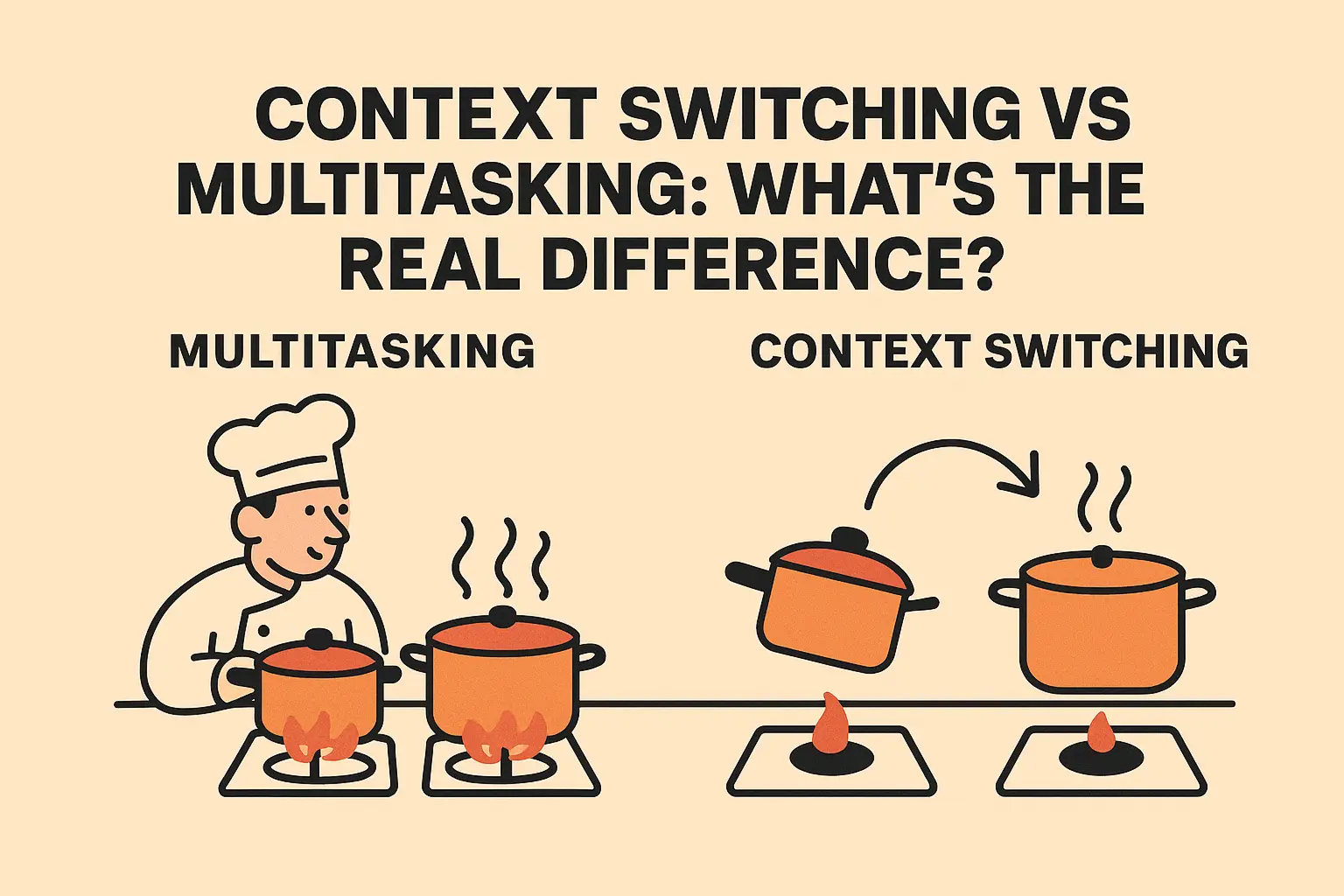
In a world full of distractions, the ability to do Deep Work—long stretches of focused, high-value work—has become a genuine competitive advantage. Yet most people find it difficult to carve out this time, protect it, and actually stick with it. Constant notifications, emails, and Slack messages constantly pull attention away, leaving little room for meaningful progress.
This article will guide you through how to design and maintain a Deep Work routine with Taskey so you can reclaim your focus and consistently perform at your best.
What is Deep Work and why does it matter?
Deep Work, a term introduced by Cal Newport, is the ability to concentrate without distraction on cognitively demanding tasks. It is the state where you are fully immersed in solving problems, building something new, or producing high-quality results.
Shallow Work, by contrast, includes things like quick email replies, routine meetings, and administrative tasks. These activities are necessary for keeping things running, but they rarely move the needle in terms of progress or innovation. Newport describes Shallow Work as easy to replicate and offering little long-term value, the kind of work that fills our schedules without pushing us forward.
When you consistently make space for Deep Work, the benefits are significant. You learn faster, sharpen your skills, and produce work that stands out. Research on time blocking and attention management shows that sustained focus not only increases productivity but also improves the quality of thinking itself. Deep Work is not just about getting more done in less time. It is about elevating the level of work you are capable of producing.
The basic principles of a Deep Work routine
A solid Deep Work routine is built on a few simple but powerful principles. The first is deliberate time blocking. Scheduling focus sessions of 60 to 90 minutes helps you enter a state of flow and stay there, rather than hoping free time will magically appear. As studies on time blocking suggest, structure is what makes deep focus sustainable.
The second principle is removing distractions before they have a chance to interrupt you. This means silencing notifications, planning when you will check your inbox, and resisting the pull of constant app switching. Research shows that even small interruptions can dramatically reduce the quality of focus.
Equally important is setting a clear goal for each session. Instead of sitting down with the vague idea of “working on a project,” decide exactly what you want to finish in that block of time. This clarity prevents your attention from drifting.
Finally, make it a habit to review and adjust your approach by reflecting on when your focus was strongest and what caused distractions. Over time, this reflection turns Deep Work into a repeatable habit rather than a lucky accident.
How to build a Deep Work routine with Taskey
Taskey brings together your inbox, calendar, and task list in one place, which makes it much easier to set up and protect the kind of routine Deep Work requires. Here is how you can use it step by step.
1. Start your morning with clarity
Before diving into work, open Taskey’s AI-powered inbox. It gathers emails, Slack messages, and other notifications, then highlights what is most important. Instead of losing time scanning through endless threads, you begin the day with a clear view of what truly matters. From there, select one or two tasks that deserve your Deep Work sessions and mark them as today’s priorities.
With your tasks chosen, move to the calendar view and block time for focus. Schedule these sessions during your peak energy hours—often early in the day for most people. This way, Deep Work is not left to chance but reserved as a fixed appointment with yourself.

2. Protect your Deep Work sessions
When the time block arrives, close unnecessary apps and reduce distractions as much as possible. Taskey helps you minimize context switching because you can read and respond to emails or Slack messages right inside the app, without jumping between different tools. Focus on the single task you planned for that session and resist the urge to multitask.
Many people find it useful to work in 90 minute cycles with short breaks in between. This rhythm matches the brain’s natural energy waves and helps you stay sharp across multiple sessions throughout the day.
3. Wrap up and reset
At the end of each session, mark tasks as complete inside Taskey. If finishing a task requires sending an email or replying to a message, you can do it immediately without leaving the app. This keeps your workflow seamless and prevents half done items from piling up.
Finally, revisit your inbox briefly to check for anything urgent, and defer everything else until your next scheduled review. By treating inbox management as a deliberate step rather than a constant background activity, you keep your Deep Work blocks protected.

A sample Deep Work schedule
Every person’s energy rhythm is different, but here is an example of how a day might look when you intentionally make space for Deep Work with Taskey.
- 08:30 – 09:00: Open the inbox, let Taskey’s AI highlight what matters, and choose today’s Deep Work tasks
- 09:00 – 10:30: Deep Work session 1
- 10:30 – 10:45: Short break and quick reset
- 11:00 – 12:30: Deep Work session 2
- 12:30 – 13:30: Lunch and recharge
- 14:00 – 15:30: Deep Work session 3 or a weekly review if needed
- 16:00 – 17:00: Shallow work: emails, meetings, or admin tasks
- 17:00 – 17:30: Wrap up the day and prepare the inbox for tomorrow
This schedule is just a template. The point is not to copy it exactly but to reserve time intentionally for high-value work and protect it from being swallowed by shallow tasks.
Why Taskey is a natural fit for Deep Work
Deep Work becomes sustainable when the tools you use support focus instead of breaking it. Taskey helps by:
- Filtering the noise with an AI inbox that shows you only what matters
- Connecting tasks with your calendar so time blocks turn into action
- Reducing context switching by letting you handle email, Slack messages, and tasks in one place
- Highlighting priorities so you always know what to focus on next
With this setup, you are not just working harder, you are working smarter. Taskey provides the structure that makes Deep Work part of your daily rhythm rather than an occasional lucky streak.
Deep Work is not about squeezing more hours into your day. It is about creating the conditions for meaningful, high-quality output. By combining the right principles with Taskey’s integrated workflow, you can protect your focus, finish the work that matters most, and end each day with a sense of real progress.




